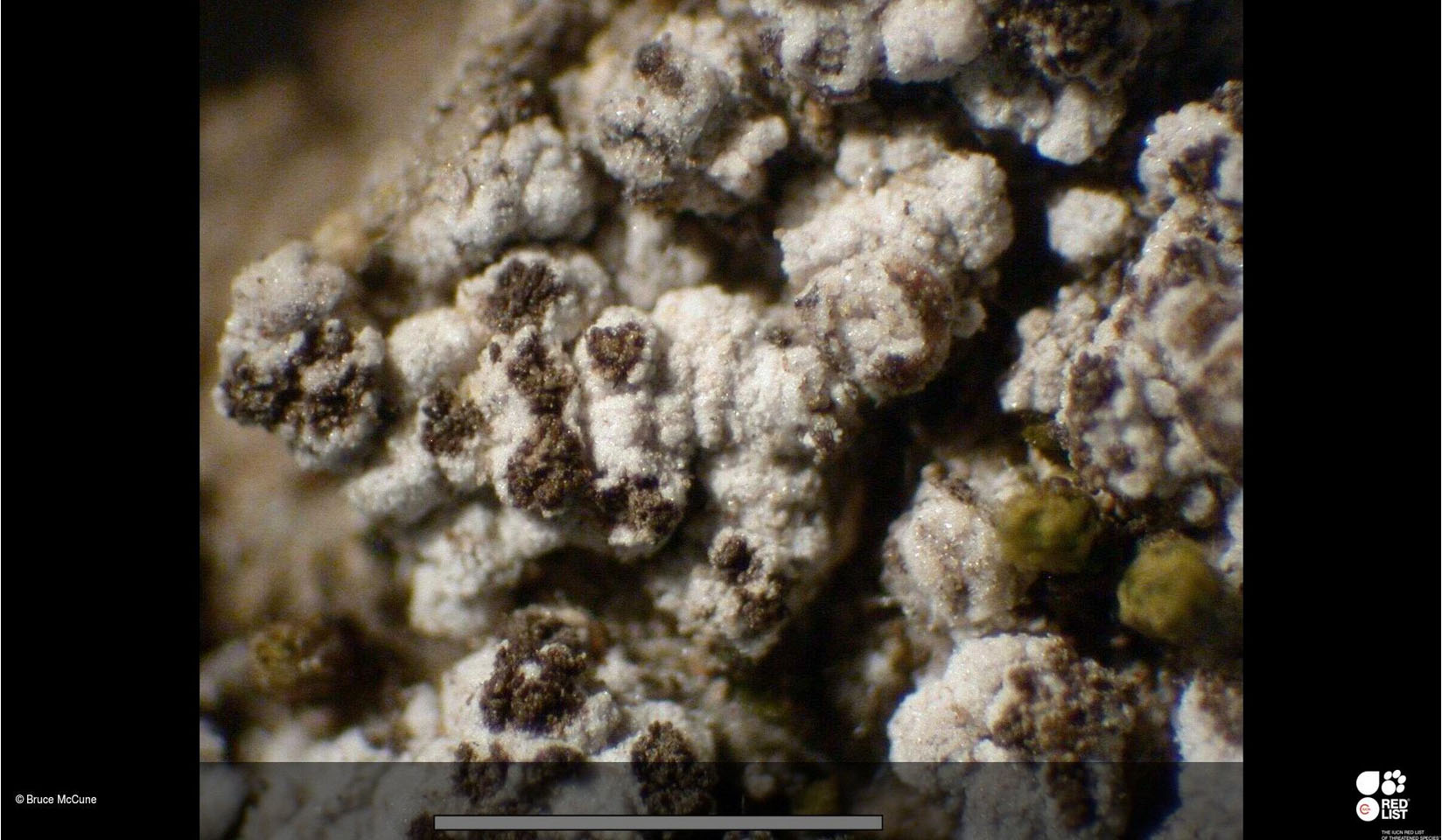
Consortium of Lichen Herbaria
- building a Global Consortium of Bryophytes and Lichens as keystones of cryptobiotic communities -
- Home
- Search
- Images
- Species Checklists
- US States: O-Z >
- US National Parks
- Central America
- South America
- US National Parks
- Southern Subpolar Region
|
Family: Trapeliaceae |
Nash, T.H., Ryan, B.D., Gries, C., Bungartz, F., (eds.) 2004. Lichen Flora of the Greater Sonoran Desert Region. Vol 2. Life habit: lichenized Thallus: crustose, warted-areolate, or squamulose to foliose surface: soredia or isidia absent or present cortex: present or absent photobiont: primary one a chlorococcoid green alga, secondary one absent Apothecia: mostly sessile and constricted at the base, often flexuose or tuberculate disc: pale beige to black margin: usually without algal cells, usually weakly prominent and persistent, in some species becoming excluded; exciple, hypothecium and subhymenium: hyaline or weakly pigmented hymenium: hyaline, weakly amyloid; upper part (epihymenium): usually pigmented; paraphyses: branched and anastomosing, septate, not distinctly thickened apically asci: clavate-cylindrical, 8-spored, Trapelia-type with an I- tholus, I+ faint blue lateral walls and an ILugol+ orange-red lumen ascospores: hyaline, simple, narrowly to broadly ellipsoid or ovoid, smooth-walled Conidiomata: pycnidial, immersed or semi-immersed with hyaline to pale brown walls conidia: hyaline, simple, bacilliform Secondary metabolites: gyrophoric acid, unknown pigments, some species (but none of the local species) lack secondary metabolites Geography: cosmopolitan. Notes: Trapeliopsis is characterized by lecideoid apothecia, branched and anastomosing paraphyses, that are apically more or less unthickened, asci of the Trapelia-type, simple hyaline ascospores, and crustose thalli. The very similar and closely related genus Trapelia is distinguished by smaller apothecia, a mostly taller hymenium, on the average larger ascospores, and a thin exciple that often has remnants of thallus flakes attached to the outside. |
Powered by Symbiota









